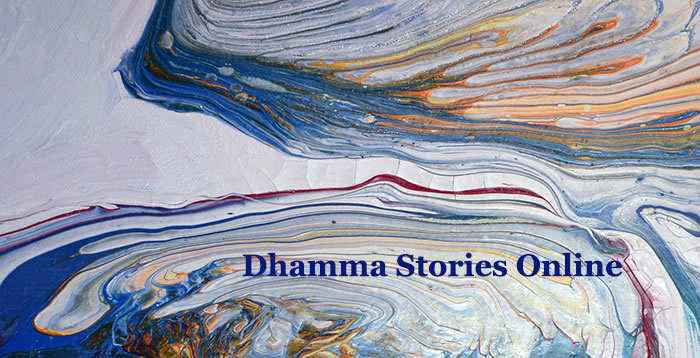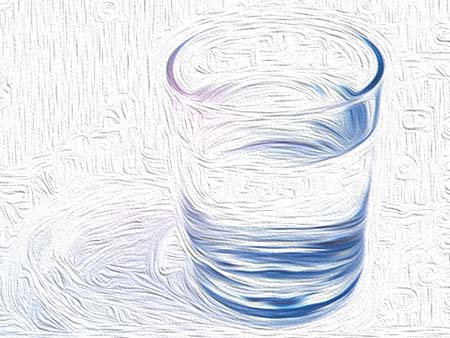
A sip of water
This is a story about an experience that changed everything. The physical environment didn’t change but I realized that it had a depth and immediacy that I had merely glimpsed before.
Prior to the visit to the English seaside town described here, I can describe the environment I interacted with as being flat, ill defined and lacking in either depth or subtlety. Not that I had anything to compare it to.
After trying the simple activities you’ll soon hear (or read) about, sounds had a depth and resonance that was beautifully shocking. Scents, fragrances and odours, tastes too, engulfed me in their range and intensity. Tactile sensations were magnified and defined and as for vision, it became such a delight that the call to become a visual artist could no longer be denied.
Let me take you back to suburban London in the early 1970s.
Opening to presence
As a student, working in a local department store over the summer holidays, I met a young man who was also working there temporarily. He was in the display section and he was employed to find creative ways to bring new products to the attention of the shoppers. It turned out that he was ‘into’ meditation too and, some time later, I went with him and a group of his friends, who were carpenters and craftsmen to listen to a talk given by a Buddhist monk, in a church hall, on the south coast of England - in a place called Hastings.
Every English schoolchild has the 1066 date of the Battle of Hastings engraved on his memory. I had never visited the actual location of that battle, so I was curious to see what it looked like.
Several dodgy old vehicles, held together with sticky tape and hope, carried our small crowd southward. It was a fine day and the sun shone sometimes.
It was shining as we approached the church hall. It seemed so incongruous that a Buddhist monk would be talking in a church hall. The spacious interior was mostly blonde wood and white paint and it smelt of polish. A fair number of people were already there, mostly clustered at the back, so we slid into the long polished benches near the front.
After some time, the monk was introduced and, draped in saffron robes, took his place standing at the lectern.
It felt so strange for a group of London Art students and craftsmen to be sitting in a Christian church hall on the south coast of England, listening to a talk given by a Thai Buddhist monk.
Although I’m sure it had been a meticulously researched and clearly-presented lecture - the monk had several PhDs and spoke at least four languages fluently - I do not remember anything he said.
I do however remember, as if it were imprinted on my memory, a short series of things that he did.
At one point in the lecture, he stopped talking – looked at the glass of water that had been placed on the upper flat surface of the lectern – reached out his hand towards it – opened his fingers – closed them slowly and deliberately around the glass – focused on the contact of the glass with his fingers – lifted up the glass – moved it towards his mouth – felt the contact of the cool glass on his lips – tilted the glass – felt the water flow into his mouth – swallowed it – tilted the glass again towards him again and took another sip. He looked in the direction of the place where he was going to put the glass down – moved the glass back there – carefully lowered it – registered the contact of the glass with the wooden surface – released his fingers from the glass – lifted his hand slightly – and drew it nearer towards him and put it down on the lower part of the document support of the lectern – looked out at the listeners and continued.

I was mesmerized. It was the first time that I had observed anyone acting with awareness focused on a series of physical actions. It was the first time that I had become aware of and watched someone who was tuned into the present, even in the little things that most people do automatically.
Automatic pilot
As a result, I realized that I had, up to that moment, been operating on automatic pilot, virtually all my life. Although I had been continuously sensing the environment and acting within it, I had been preoccupied with ‘thoughts’ about what was happening and more often, with what was likely to happen and the possible outcomes of that.
Actual focused awareness of the stream of present moments was, if it happened at all, disassociated from the physical actions and sensations, which had mostly been relegated to the position of ‘background’. The mind sense had been ruthlessly and all but continually ‘dominant’.
Worse, the mind sense was not neutral. It was pre-conditioned and skewed by culturally imposed attitudes that tinted each experience with a particular orientation and judgment.
I realized that, most of the time, I had been walking around perceiving a dampened down version of what had been taking place.
Incoming data had been filtered and pre-judged according to a censorship net of cultural acceptability.
Put another way, I was seeing the vast spread of visual information that was in front of my eyes within a narrow spectrum of possibilities, because that was what I had been told, or conditioned to believe, was the way things were meant to be.
Social acceptability filters screened out all but a few sensations that conformed to the conventional meme. The other, perhaps 90 percent of sensations were mentally discarded or blocked.
When you see clearly how the imposed, or assumed to be correct, matrix limits our knowing of the stream of mind moments, it is as if, suddenly, someone has pulled back the curtains and light has flooded into the room.
There are thousands upon thousands of students
who have practised meditation and obtained its fruits.
Do not doubt its possibilities because of the simplicity of the method.
If you cannot find the truth right where you are,
where else do you expect to find it?
Dogen
|